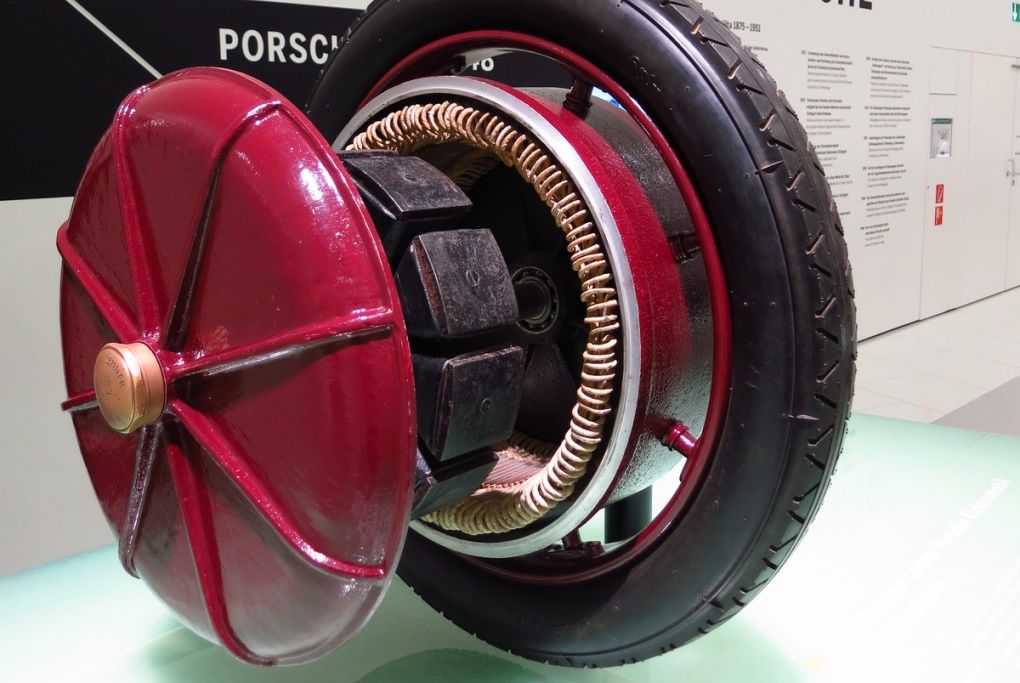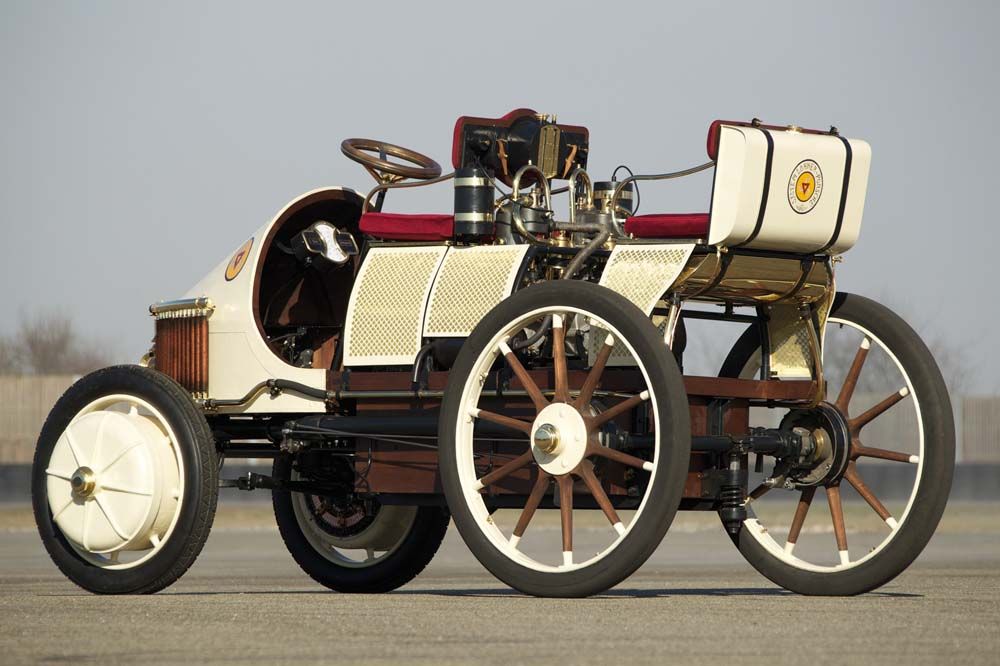Lol:
The new YASA axial flux motor weighs just 28 pounds, or about the same as a small dog.
However, it delivers a jaw-dropping 750 kilowatts of power, which is the equivalent of 1,005 horsepower.
I feel like we’d need peak horsepower output of a small dog to truly understand this.
A dog’s power output comes from its muscle mass, which for a healthy dog is about 45% of its total body weight. This gives our 28-pound dog roughly 12.57 lbs (or 5.7 kg) of muscle.
Studies of animal muscle show that the peak power output of vertebrate muscle tissue during a short, explosive burst (like a jump or the start of a sprint) is around 100 to 200 watts per kilogram of muscle.
Now we can estimate the dog’s peak power:
- Low estimate: 5.7 kg of muscle x 100 W/kg = 570 watts
- High estimate: 5.7 kg of muscle x 200 W/kg = 1140 watts
Converting these figures to horsepower (1 horsepower = 746 watts):
- Low estimate: 570 W / 746 ≈ 0.76 horsepower
- High estimate: 1140 W / 746 ≈ 1.5 horsepower
So, a small 28-pound dog might be able to generate a peak power of around 0.75 to 1.5 horsepower for a very brief moment.
So this YASA motor is somewhere between 670 and 1,340 times more powerful than the dog it’s being compared to in weight. That’s some jaw-dropping power output.
I tried to sanity-test the math here running the same calculations on a 700 kg horse, of which around 50% mass is muscle.
700 kg x 50% = 350 kg
Low:
350 kg x 100 W/kg = 35,000 W
35,000 W / 746 ≈ 47 hp
High:
350 kg x 200 W/kg = 70,000 W
70,000 W / 746 ≈ 94 hp
Despite what the term “horsepower” would seem to suggest, a horse can actually output more than one horsepower. Estimates put peak output of a horse around 12-15 hp. By those numbers, even the low end estimate above is around 3-4x too high. We’re gonna need more dogs.
We’re gonna need more dogs.
I accept your terms.
I appreciate the sanity check, but just to throw a monkey wrench into your model…
I think the square-cube law will bite you here. I expect power/mass isn’t constant. Mass grows faster than cross-sectional area which is key in muscle performance.
Fair
I’m guessing that would be if every muscle was being used for propulsion at any given time. You’d need to allow for heart and lungs, as well as face, neck, tail muscles that don’t contribute to power output, plus legs don’t provide continuous power as they need to make a return trip.
If we really wanted to optimise a dog for power:weight there are quite a few systems we could do away with. But it would likely result in a less floofy doggo, so it’s obviously not an option.
Stop burning the planet down to generate social media comments about shit you don’t understand
If I’m not mistaken, you specifically showed an interest in better understanding this.
-
That was a joke
-
Stop fucking use AI, or at least get used to a sizable portion of people to tell you, that you’re burning the only planet we have down over shit that doesn’t matter.
Username checks out
deleted by creator
-
You can talk horsepower and dogpower all day, but I won’t really understand until you convert it to bananapower, for scale.
Something something anything but metric…
For all non Brits: 1 dogpower = 1005 horsepower It’s an imperial unit. You’re welcome.
Had an ex-friend who was a motorhead arguing that electric motors will never beat ICE because they lack comparable torque. Look, I’m no mechanic, but I never got my head around that.
“You mean they don’t have enough torque to run a US destroyer?! Someone should call the Navy.”
Seriously, if you’ve played with even a tiny electric motor, provide DC, it goes, instantly. What could he have possibly been trying to say?
I think he was trying to admit he doesn’t know shit about electric motors.
Tool companies need to nerf electric motors in drills to prevent wrists from breaking.
My parents had an original Prius and it was a weedy little car that made those two hippies really happy. If that was his only experience with electric cars I can see why he’d think that.
But the new ones are fucking rockets. I just don’t understand why they need all that. Can they make a cheaper one that’s got 300 horsepower?
. I just don’t understand why they need all that.
Power sells, they can give that insane 0-60 sprint for very low cost, so it gets people to buy their product instead of a 6 liter V8.
I guess I’m really lamenting the death of the shitbox econo car.
It’s so sad, because we could make really great shitbox econo cars now. China, Japan and India are doing it, meanwhile in the U.S. we’re needing side-step assistance to climb into our tower-viewing position $80K+ ROADMASTER trucks and SUVs.
There are places in the US that, instead of banning giant trucks, are banning Kei trucks.
I hate this country.
Usually the electric cars with a larger motor are also more efficient, since the motor does not have to run near its peak all the time.
What could he have possibly been trying to say?
I mean, the general appeal of ICE engines is the fuel, not the engine. Gasoline is generally more energy dense than lithium.
Nah, his complaint was lack of torque. Very strange, never got it. Figured he was repeating fossil fuel propaganda. But he was a motorhead!
And yes, energy density is the thing no one talks about when raging against fossil fuels. A gallon of refined gasoline packs insane energy. I’ve run my 5-gallon, crappy Harbor Freight generator all night into the morning, powering the camp, heaters and all, never came close to emptying it. Contrast that with a monster LIPO4 battery that died in 48-hours only powering LED lights. (Gotta admit, something weird happened there.)
Nah, his complaint was lack of torque.
Maybe just had torque confused with horsepower? That’s been the historical trade-off between gas and electric. Sure, its very easy to get an electric motor to jump into action. But it is comparatively difficult to generate the same amount of power with equivalent fuel density.
A gallon of refined gasoline packs insane energy.
Much of which is lost to heat when combusted, which is the historical hang-up.
Not that batteries don’t have their own heating problems. But the benefit of batteries is that they’re an engineering problem we can solve with miniaturization, which we’ve become incredibly good at. We’re at a soft ceiling in terms of engine chemistry. Petroleum is about as refined as we’re going to get it. Combustion’s math is what it is. Improvements to the efficiency of modern engines have stalled out as an automotive tool, even to the point that a gas engine powering an electric capacitor in a hybrid yields performance improvements over the gas engine just spinning the wheels directly.
“EVs lack comparable torque to ICE” - guy in my rearview mirror
Electric motors don’t have a torque curve like ICE, which is why they don’t need a transmission. Those massive submarines run on electric motors.
Until someone tests it independently, this should be considered BS.
This looks small enough to be installed within the wheel hub itself. Imagine a car with four motors, one inside each wheel. The entire floor pan could just be one thin battery, and everything above it could be passenger and storage space.
That’s how EVs started! Sorta.
This is from a Porsche in 1900:


And some 2000s EVs tried it. But it’s impractical.
-
It increases unsprung weight, e.g. weight not cushioned by suspension. Bad for ride/handling/steering feel.
-
All that vibration is HARD on the motor. Read: unreliable.
-
Motor is more exposed to temperature/dust. Again, reliability.
In reality, a decent suspension needs a lot of room under the body anyway. An axle to get the motor in the body is dirt cheap on the rear, and still pretty cheap on the front, and you could just mount this thing sideways to make it flat…
-
That would be a lot of unsprung weight.
Handling and ride quality are dramatically and negatively impacted by every bit of weight that is not held up by the suspension. That’s why higher performance cars will have lightweight wheels. Rather than steel wheels you see on lower performance cars.
It’s better to just put all the heavy drive components inboard on the chassis and run drive shafts to the wheels.
You see motors in the hubs of bicycles, because they really don’t go that fast. So even if the bike has a suspension, it’s not that big of a deal. Motorcycles on the other hand would need to keep any heavy parts inboard.
PS
One issue I hadn’t thought of is putting traditional brakes (which generate a ton of heat) right next to the motors. Again, we’re just asking for mechanical issues here, and we’re ballooning unsprung mass to mitigate it, especially in heavier cars that take a lot to stop.
The entire floor pan could just be one thin battery, and everything above it could be passenger and storage space.
This seems like a minor thing, but the control electronics for the motors takes up a nontrivial amount of space. So do “traditional” subsystems like hydraulics, climate control, or an old fashioned car battery (which often exists in parallel to the EV drivetrain).
Theres also safety to consider. A traditional sedan “hood,” even a small one, is easier on standing pedestrians, so it hits their legs and they flop on top, instead of slamming them like a wall (as a bus-like front would).
Hub motors are a party trick. They will never reach mass market in a car.
They work well on bikes. I could appreciate 1000bhp hub on my 12kg touring bike. 🤭
I agree, they are good for minimally suspended low speed personal transport.
German company DeepDrive has some kinda promising tech. And the ID.Polo seems to be said to have hub motors.
Not even the concept had hub motors.
https://www.autoexpress.co.uk/news/volkswagen-id-polo
https://electricarworld.com/volkswagen-polo-makes-a-comeback-as-an-electric-car/
https://auto.hindustantimes.com/auto/electric-vehicles/volkswagen-id-polo-gti-breaks-cover-at-iaa-mobility-comes-as-reborn-polo-gti-41757316409552.htmlLimited slip differential? Can’t do that with hub motors. https://www.topgear.com.ph/news/car-news/volkswagen-id-polo-prototype-a5100-20250908
If you have different information about a production car, please share it. The theoretical concept ID.2 R may use hub motors but that is vaporware at this point.

I only have german articles. I only heard it in the video source below, and they sadly don’t really say how the normal problems with hub motors would be solved even though they have a section for it in the video.
https://www.electrive.net/2025/06/20/vw-soll-neues-topmodell-id-2-r-mit-radnabenmotoren-erwaegen/
Renault 5 RS Turbo has hub motors, Nostradamus.
mass market
There’ll be 1,980 of these builtThat car is the definition of a party trick. You proved my point, so thank you.
Right, because 2000 of something is not mass production.
And here is a source in China definitely not making >20 hub motors for cars, scooters, etc.
And BMW did not invest $30M in DeepDrive, hub motor supplier.
You should tell these people they are all stupid.
No, less than 2000 cars is not mass market.
To secure your order for one of the 1,980 examples of Renault 5 Turbo 3E, contact us below. You’ll get a call back very soon to make an appointment to reserve in the retailer.
Sounds very limited market.Those are golf cart and scooter motors, not suitable for highways
BMW currently uses brushed motors in their EVs so I’m not looking to them for any advice. Maybe BMW wants their traditional central layout CM450 tech. But! DeepDrive is the first hub motor I’ve seen that did not need gearing, so that is actually cool. I think they’ll be relegated to rear wheels due to scrub radius limitations but that could be ok.
Renault 5 RS Turbo
That’s because its a limited run show car. Its not meant to be practical.
This is already pretty close to how many EVs are designed.
Except for the fact that that much power would need massive batteries. So your thin small battery would be dead the first time you mashed the peddle to the floor
forgot the part where they were excited to put the batteries on the tire
1000 hp = 0.75 MW. If 98% efficient that’s 15KW of heat dissipation Sounds like a subsystem bigger than the motor.
Yep, I noticed that, you’re right. And that’s near-miraculous efficiency. The maker’s website sez: “YASA also estimates that its all-important continuous power will be in the region of 350kW-400kW (469bhp-536bhp).” It also sez: "To achieve a 750kW short-term peak rating and a density of 59kW/kg … " Devi’ls in the details … The image on the ‘superblondie’ page shows A LOT of cooling built into whatever metal that is: https://supercarblondie.com/wp-content/uploads/YASA-tiny-electric-motor.webp
Sez. I lol’d
EV motors are already over 90% efficient. They don’t piss away evergy as heat like ICE, where about 40% of the gas is wasted as heat and noise.
cant wait for corporations to crush the competition with some bullshit yet again and then complain that we’re at peak EV tech anyway
Ah good thing the batteries are not the heavy part of the system otherwise this would be awkward.
300-400kW continuously should be the headline. Thats impressive. Lots of motors can try and make 1000hp if you feed them enough voltage but only for a split second before they overheat and burn out. I wonder how long it can do this 1000HP.
“YASA” sounds like a mashup between YMCA and NASA. Even their logo looks like the Y’s.
YMCA NASA colab would’ve been lit though
Hopefully the numbers are correct. The article however is shockingly terribly written.
These get shit out by LMs at the rate of a dozen a day.
Anything but metric!
This, in a folding, commuter e-bike.
*guns throttle* Tires and tube liquify, blast apart, rim rapidly grinds to nothing against the pavement, spokes rocket in all directions. Onlookers remark: “pretty cool way to go out…” And then give the 🤘 hand gesture
Ah they’re rating motors like they used to rate speakers?
https://www.amazon.ca/Mr-Dj-PSE65BT-Portable-Rechargeable/dp/B078BT8DB4
Ah happy days. I’ve not heard PMPO in so long!
holy shit
How much torque though? HP is nice but power is in the torque as much if not more than the voltage(HP)
The voltage/hp comparison there doesn’t really fit.
Power is in watts or horsepower. You multiply the torque with the RPM and a scaling factor to get power.
A higher voltage system could probably be expected to produce more torque and power from the same size motor, but a lot depends on the design of the motor.
Then to answer “how much torque though,” I haven’t looked into it but electric motors have a very nice torque curve across the RPM range. If a motor made all that power with low torque, then it must spin at super high RPM and need to be geared down.
That motor doesn’t look like it has enough mass to properly make enough torque to drive the weight of a car even if said car it made entirely of carbon fiber
Totally, and I think that’s why they thought it was worth a press release. In the article they go right to how they’re setting a new power density record with this design.
Electric motors are just really power dense. The article says they managed a short term peak of 1,000 hp with that little flat 12.7kg motor and the continuous output could still be half that.
Just the cooling must be crazy.
Out of curiosity I looked up something comparable. It looks like high-performance integrated drive units that have other stuff like the single-speed gearbox, differential, and inverter are still only in the dozens of kg.
Electrics produce maximum torque at 0 rpm …











